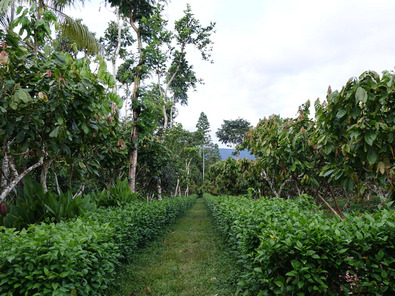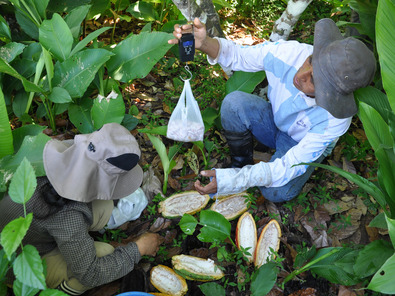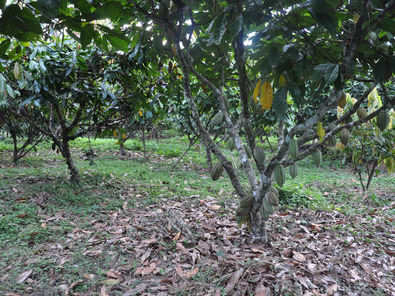Long-term experiments (LTE) Bolivia
In 2008/2009 a long-term experiment was established to compare the agronomic, economic and ecological/environment performance of different cacao production systems: to study conventional and organic cocoa production in monocrop (full sun) and agroforestry (shaded) systems. The LTE was established on land which was under fallow for 20 years, covered with a secondary forest.
i) monoculture, full sun (in the cocoa production phase) with conventional management
ii) monoculture, full sun (in the cocoa production phase) with organic management
iii) diversified, shaded agroforestry system with conventional management
iv) diversified, shaded, agroforestry system with organic management
v) diversified, shaded successional agroforestry system with no external inputs, and
vi) fallow land (no crops) as a reference for biodiversity and soil fertility studies.
Since 2009 the project partners register data on yields of cocoa and by-crops, labour time, costs of agronomic inputs and income from harvested products, tree growth, pest and diseases, phenology of cacao trees, climate and soil fertilty on a regular basis for the five different treatments. Additionally punctual studies together with PhD, master and bachelor students from partner universities as well as our local partners of the Institute of Ecology in La Paz have been made and are ongoing on biodiversity, soil fertility, nutrient cycling, microclimate, social resilience, cocoa quality, cocoa cultivar evaluation, energy consumption, etc.
The organic treatments comply with the European regulation for organic production. Conventional treatments are based on best practices developed by Latin-American research institutions and the Sustainable Tree Crops Program (STCP) of the International Institute of Tropical Agriculture (IITA), adapted to the Bolivian context.
Gross trial plots are 48m x 48m (2’304 m2), while net plots are 24m x 24m resulting in 576 m2. The experiment is arranged in a randomised complete block design with four replications, using soil homogeneity and test crop assessments for block building.
Impressions from the long-term trial




 tap and then scroll down to the Add to Home Screen command.
tap and then scroll down to the Add to Home Screen command.